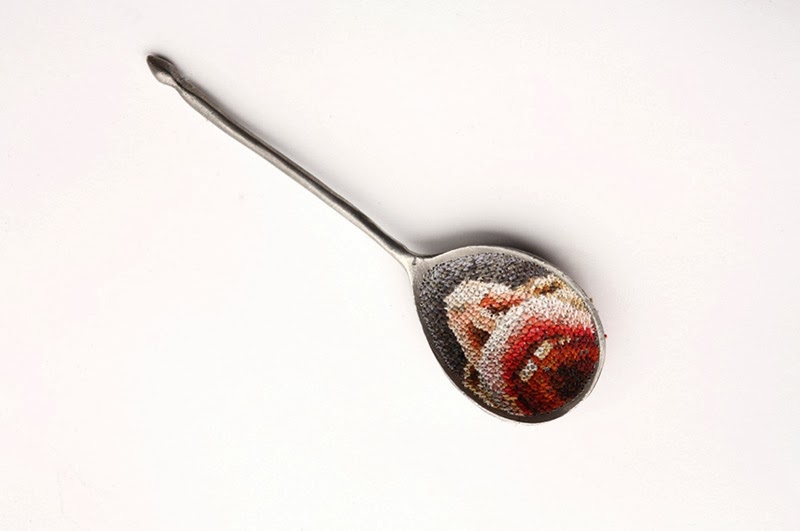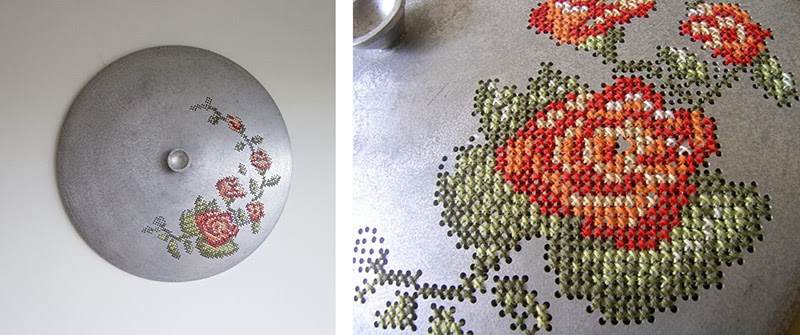Cayce Zavaglia
Stitch by stitch and color by color St. Louis based figurative artist Cayce Zavaglia (previously) utilizes her background as a painter to embroider excruciatingly detailed portraits that look almost like photographs. The process, which she refers to as a “renegade approach to embroidery”, begins with a photo-shoot consisting of 100-150 portraits from which she selects the best image and then moves to the canvas where she works with one ply embroidery thread on Belgian linen to create each piece which is often not larger than 8″ x 10″.
Cayce has to say about her work:
“Over the past 16 years, my paintings have focused exclusively on the portraits of friends, family, and fellow artists. The gaze of the portrait toward the viewer has remained constant, as has my search for a narrative based on both faces and facture. The presence of actual paint, however, has slowly been disappearing from my paintings.
Initial works on canvas, painted so thickly they often resembled cake frosting, transitioned into works on panel that employed thin layers of medium-laden oil paint. These works subsequently led to my current series, in which the portraits are sewn with crewel embroidery wool and the use of paint is limited to the background only. From a distance they continue to read as paintings and only a closer inspection reveals their true construction.
“Working with an established range of wool colors proved frustrating at first because I was unable to mix the colors by hand. Consequently, I created a system of sewing the threads in a sequence that would ultimately give the allusion of a certain color or tone.
The direction in which the threads were sewn had to mimic the way lines are layered in a drawing to give the allusion of depth, volume, and form. Over time the stitches have become tighter and more complex but ultimately more evocative of flesh and hair and cloth.






















































